| Time |
|---|
| Assessment Questions |
Time is the ongoing sequence of events taking place. The past, present, and future.
Time is measured using seconds, minutes, hours, days, weeks, months and years.
Clocks are used to know time.
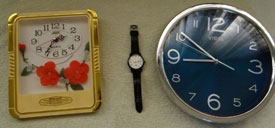
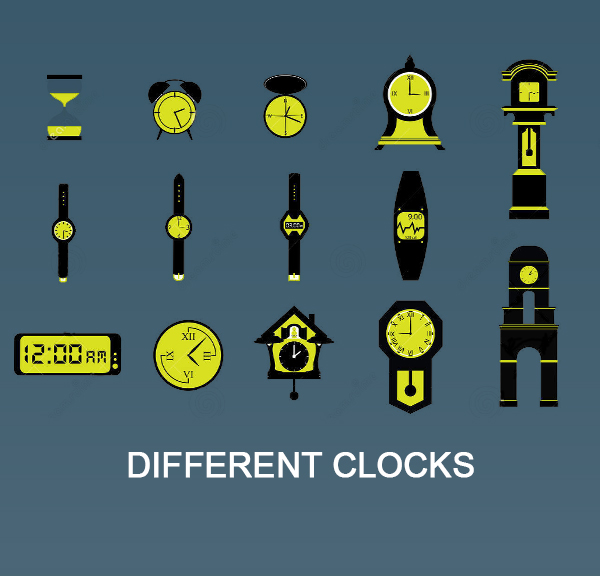
Time is shown as Hours: Minutes
A Day has 24 Hours and each Hour has 60 Minutes
Time can be Am or PM
Look at the Clock below:
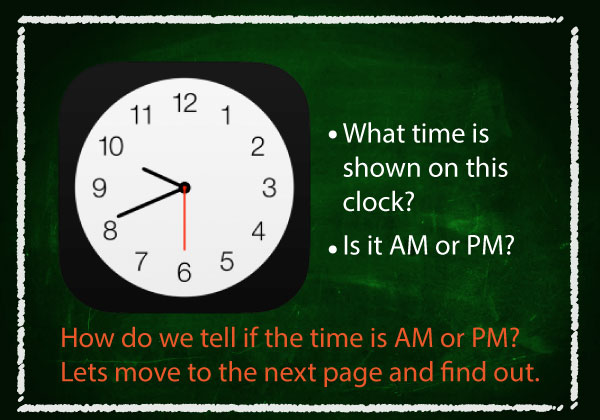
Any time before Midday is refered to as AM i.e from Midnight to Noon.
Any time after Midday is PM i.e from Noon to Midday
Study the image below carefully.
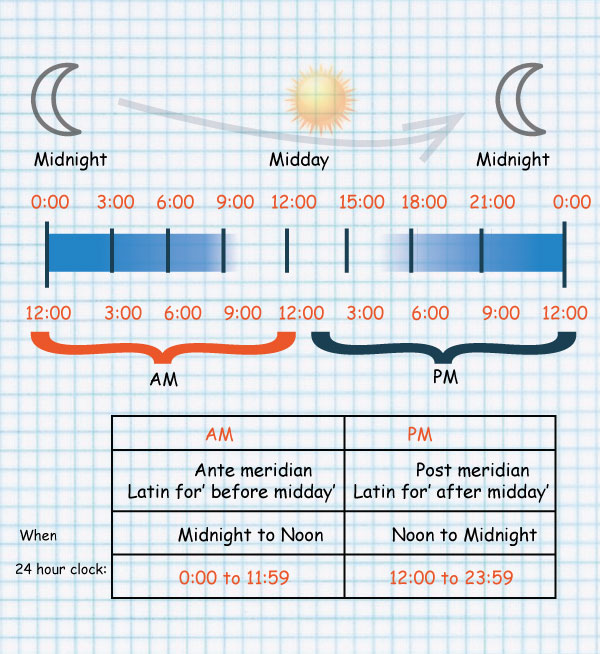
The common units of time include:
1. Second(s) 60seconds = 1min
2. Minutes (min) 60mins = 1hour
3. Hour (h) 24hours = 1day
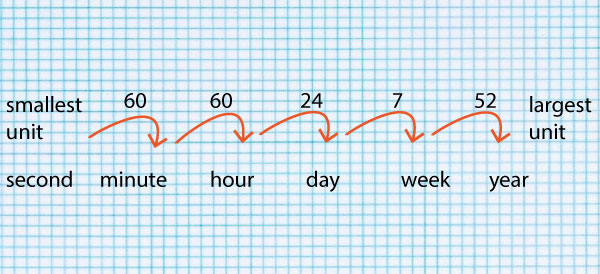
4. Day 7days = 1week
5. Week 4weeks = 1month
6. Month 12 months = 1 year
7. Year(yr) 365days = 1year
Months with 31 days are January, March, May, July, August, October and December.
The rest have 30 days each except February which has 28 days but 29 days in a leap year.
In the 12 h-clock system, the day is divided into:
a.m (Ante-Meridian or Before noon)
and p.m (Post-Meridian or afternoon).
In the 24 h-system time is written in four digits.

The first two digits indicate hours and the last two digits indicate minutes past the hour.
Before noon, the time rages from 0000 h(mid night) to 1159 h (just before noon).
From noon, the time ranges from 1200 h to 2359 h (just before midnight).

When converting from 12 h system
1.00 a.m.
would be 0000 h + 0100 = 1100
but 1.00 p.m.
would be 1200 h + 0100 = 1300 h
Suresh arrived at his shop at 7.40 a.m. He worked for 1 h 30 min before going for tea break.
He came from tea break at 10.30 a.m and went for lunch at 1.35 p.m.
(a) the time he went for tea break in a 24-hour system).
(b) time he spent for his tea break.
(c) time he worked after tea break.
(d) the time he went for lunch in 24-hour system.
(a) Arrival time ………… 7.40 a.m
Time spent working …… 1 h 30 min
7.40 + 1.30
Time break starts 9.10 a.m
in 24-hour system 0000 h + 0910 = 0910 h
(b) Time spent on tea beak 10.30 – 9.10 = 1.20 = 1 h 20 min
(c) Time he worked after tea break
Start time 10.30 a.m
Lunch time 1.35 p.m
10.30 a.m to 12.00 noon = 1 h 30 min
12.00 noon to 1.35 p.m = 1 h 35 min
Total time worked from 10.30 a.m. to 1.35 p.m. = 3 h 5 min
(d) Lunch time was 1.35 p.m
= 1200 h + 0135 h
= 1335 h (in 24-hour system)
Time wasted is never recovered
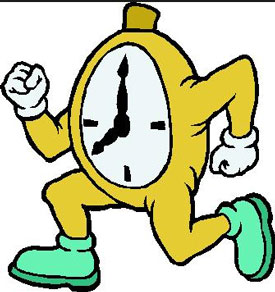
Plan your time well always
There are two main ways to show the time: "24 Hour Clock" or "AM/PM"
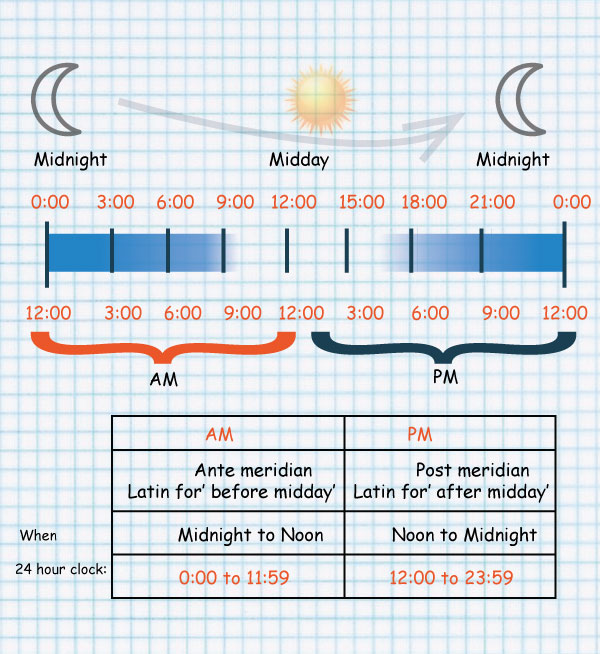

Is it AM or PM?
Can you write it in 12 hour and 24 hour systems?
1. A bus left Mombasa on Monday at 11:30 a.m. It took 15 hours to reach Homa Bay. When did it reach Homa Bay?
A. Tuesday 0230 h B. Tuesday 1430 h
C. Wednesday 0230 h D. Monday 1430 h
2. A minibus left Nairobi for Kisumu at 9.45 a.m. The journey took 7h 55min. at what time did it arrive at Kisumu?
A. 4.40 a.m. B. 5.40 p.m. C. 5.00 p.m. D. 5.40 a.m.
3. An afternoon radio performance starts at the time shown below.
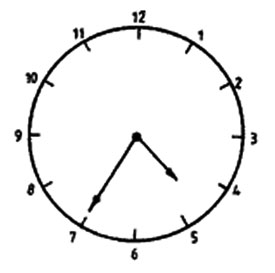
If the program takes 45 minutes, what time will a 24-hour clock show at the end of the program?
A. 0520 h B. 1680 h C. 1720 h D. 1820 h
4. A train left Mombasa at 1850 h. It took 12 hours and 55 minutes to reach Nairobi. At what time did it reach Nairobi?
A. 7.45 a.m. B. 7.05 p.m. C. 7.45 p.m. D. 7.05 a.m.
5. Odera left Garissa at 2.00 p.m. on Saturday. He arrived in Nairobi after 6 hours. After one hour and fifteen minutes stop, he continued with the journey to Kisumu taking another 4 hours and 30 minutes. When did he reach Kisumu?
A. Saturday at 1.45 a.m. B. Sunday at 1.45 a.m.
C. Saturday at 1.45 p.m. D. Sunday at 1.45 p.m.
6. Mayaka started work on his shamba at 7.30 a.m. After working for 3 h 15 min, he rested for half an hour. He then worked until 1.00 p.m. After a one-hour lunch break he worked up to 3.45 p.m. For how long did he work on the shamba that day?
A. 6 h 45 min B. 7 h 15 min C. 8 h 15 min D. 8 h 45 min
7. A meeting began at 11.45 a.m. After 1 h 15 min, members went for a 50 minute lunch break. The meeting then continued for 1 h 40 min. at what time did it end?
A. 2.50 p.m. B. 2.40 p.m. C. 3.30 p.m. D. 3.45 p.m.
8. A goods train left town K on Friday at 2345 h. it took 8 h 55 min to arrive at town N. when did it arrive?
A. 0840 h on Friday B. 0800 h on Saturday
C. 0840 h on Saturday D. 0800 h on Friday
9. An aeroplane took 3 hours 15 minutes to travel from Johannesburg to Nairobi. If it reached Nairobi 0200 h on Monday, at what time had it left Johannesburg?
A. 2245 h on Sunday B. 2245 h on Monday
C. 1045 h on Sunday D. 1045 h on Monday
10. A one and a half-hour meeting started 25 minutes late and ended at 4.15 p.m. At what time was the meeting supposed to start?
A. 2.20 p.m. B. 2.45 p.m. C. 3.10 p.m. D. 3.50 p.m.
11. A meeting took 2 h 45 min before a 55 minutes’ lunch break. It then continued for another 2 h 15 min and ended at 4.15 p.m. At what time had the meeting started?
A. 10.20 a.m. B. 11.00 a.m. C. 11.15 a.m. D. 1.05 p.m.
12. Mwale takes 2 h 12 min to cycle from home to school at an average speed of 8 metres per second. He cycles from school back home at an average speed of 12 metres per second. How much time does Mwale take to cycle from home to school and back?
A. 1 h 28 min B. 4 h 24 min
C. 3 h 40 min D. 2 h 56 min
13. A sports meeting started at 2.55 p.m. and took 4 hours and 45 minutes. At what time, in the 24-hour clock system, did the meeting end?
A. 0740 h B. 1840 h C. 1900 h D. 1940 h
|
MOMBASA |
|
|
|
|
|
|
|
5.00 |
MAZERAS |
|||||
|
8.00 |
4.00 |
MARIAKANI |
||||
|
13.00 |
9.00 |
6.00 |
SAMBURU |
|||
|
27.00 |
23.00 |
19.00 |
14.00 |
MAUNGU |
|
|
|
29.00 |
25.00 |
21.00 |
16.00 |
5.0 |
NDARA |
|
|
33.00 |
29.00 |
26.00 |
23.00 |
12.00 |
8.00 |
VOI |
14. A lorry left Mombasa at 2035 h on Sunday and took 7 hours and 40 minutes to reach Nairobi. At what time did it reach Nairobi?
A. Sunday at 4.15 a.m. B. Monday at 4.15 a.m.
C. Sunday at 4.15 p.m. D. Monday at 4.15 p.m.
15. A train left Mombasa on Saturday at 1445 h and took 9 hours and 30 minutes to reach Kisumu. When did it reach Kisumu?
A. 0015 h on Saturday B. 0015 h on Sunday
C. 2375 h on Saturday D. 2375 h on Sunday
16. The first session of a meeting started at 9.30 a.m. and ended at 12.20 p.m. Lunch break took 1 h 15 min. the meeting then resumed and the second session ended at 4.15 p.m. How long did the two sessions ended at 4.15 p.m. How long did the two sessions take altogether?
A. 6 h 45 min B. 5 h 70 min
C. 5 h 30 min C. 2 h 50 min
17. A film show took 1 hour and 35 minutes. It ended at 1800 hours. At what time did the film show start?
A. 7.35 pm B. 4.25 pm C. 7.35 am D. 4.25 am
18. A fund raising walk started at 8.30 am. The fastest walker took 4 hours and 45 minutes to complete the walk. The slowest walker completed the walk 1 hour and 20 minutes after the fastest walker had finished. At what time did the slowest walker arrive at the finish point?
A. 2.35 am B. 9.50 am C. 1.15 pm D. 2.35 pm